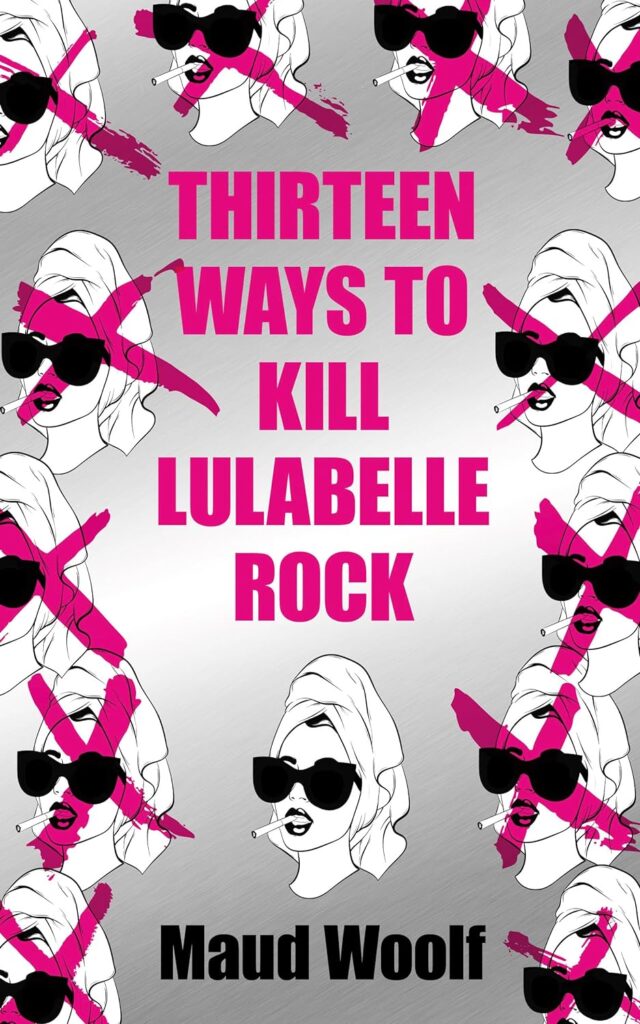Unique, unpredictable, and uncanny: the three words I would use to summarise upcoming
novel Thirteen Ways to Kill Lulabelle Rock by Maud Woolf.
Set in Bubble City, a futuristic metropolis situated in a barren desert, with a high-rising
system that finds the elite at the top and those less fortunate in the underbelly of the city,
this dystopian novel spans across three days. Realistic clones, known as Portraits, are easily
accessible and used by the elite for chores they don’t have time for. Portraits quickly
become pawns used by the rich who desire more passive income sources. Ahead of her
upcoming movie release, actress Lulabelle Rock desires to get rid of her 13 Portrait, hoping
it will earn her some publicity.
This is where the protagonist of the novel, Lulabelle Rock #13, comes in: she’s been created
with orders to kill all her predecessor Portraits at the command of the original Lulabelle
Rock. Although this sounds like something straight out of a Black Mirror episode, Maud
Woolf manages to pull this off in a way which is deeply unsettling due to its realism and
originality.
We follow Lulabelle #13, or Death as she sometimes refers to herself, on a journey of self-
discovery as she completes the string of assassinations. With Portraits becoming more
human the longer they are alive, this leads to a lot of self-doubt by #13. The novel raises
issues such as individuality and duty vs. honour. The blend of Portrait naivety and the
worldly experience of the original Lulabelle Rock make for an interesting narrative voice To
comply, or not to comply, that is the question running through #13 head continuously as she
continues to adapt to her new life and begins to grow morals as a consequence.

As a pessimist in a world where AI is rapidly blurring the line between reality and fiction,
nothing about this dystopian world shocked or horrified me. This sci-fi novel serves as a
premonition for what’s to come in terms of AI and technology bleeding into every aspect of
our lives. It’s not difficult to picture some of our favourite celebrities of today using Portrait
technology in a similar way to Lulabelle Rock, who creates Portraits specifically for partying
or for attending to her social media. Although well-hidden within the novel, the criticism of
capitalism is interwoven into every aspect of the plot.
Despite the heavy connotations of implied self-slavery via clones, Maud Woolf often allows
well-placed humour to seep through the cracks with her witty satirical depictions of the
upper-class colliding with such technology. Commentary on the capitalistic power imbalance
between the social classes prevails throughout the novel. As #13 ventures further and
further away from the sparkling skyscrapers and cocktail parties at the top of the City, it is
clear to see Woolf desires some kind of change in society if we are to avoid a similar fate.
This is largely why I found the most promising aspect of the novel to be the setting.
Somehow the individual ‘location’ of each Lulabelle Rock is very distinct and fleshed-out,
which is rather impressive considering there are 13 versions of the same woman running
around Bubble City. This meant that the structure of the novel flowed well, with quick and
consistent pacing to maintain momentum. Thirteen Ways to Kill Lulabelle Rock served as an
excellent book to get me out of a reading slump. For all fans of Black Mirror and Orphan
Black, I highly recommend checking this book out when it’s published.
Lastly, I would like to thank NetGalley and Angry Robot for sending this book for review
consideration. As always, all opinions are my own.
Thirteen Ways to Kill Lulabelle Rock by Maud Woolf is out from January 9, 2024.

